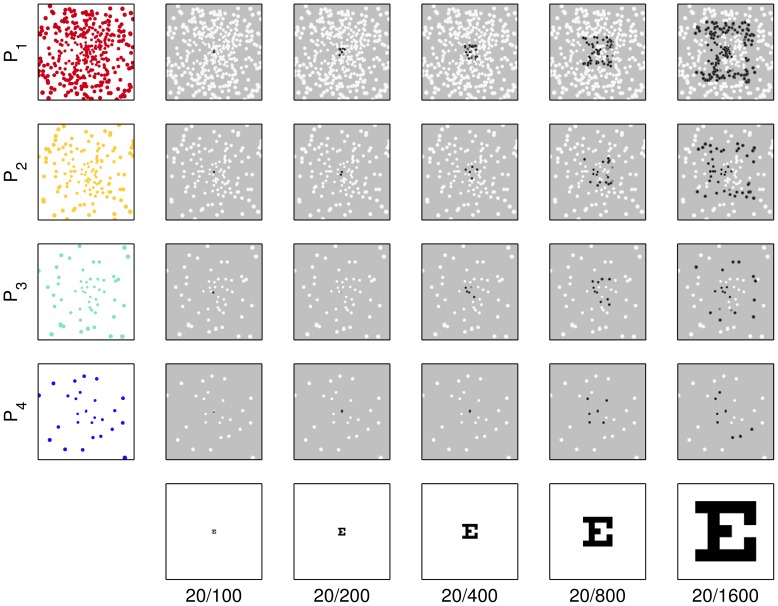Figure 3. Stimulus combinations.
The combinations of optotype size F1–F5, Snellen 20/100 through 20/1600 (horizontal direction) and phosphene pattern P1–P4 (vertical direction) are shown in this collection of snapshots of the center part of the subject display during the Free View phase. Parameter values were selected such that it was impossible for subjects to identify letters with the lowest resolution phosphene pattern viewing the smallest optotypes (lower left subfigure) to provide a negative control, and quite easy with the highest resolution pattern viewing the largest optotypes (upper right subfigure) to provide a positive control. Snapshots shown are for gaze positions at the center of the monitor. Only the centralmost 10° of stimuli are shown; the remainder of the screen would be uniformly gray. Stimuli, animated through the gaze-contingent mechanism, were more readily identifiable than the static images above might suggest.

